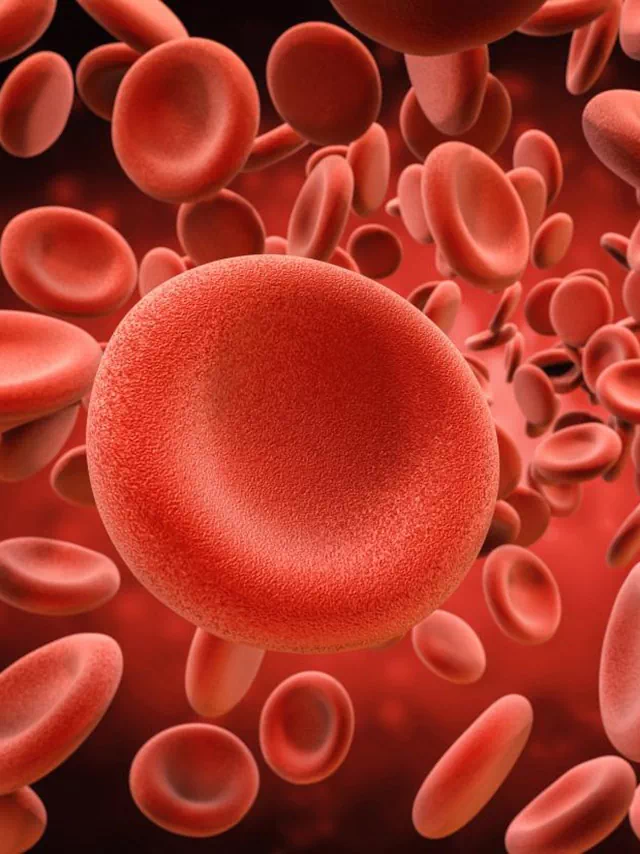Normal blood sugar levels can vary by age, and they are measured in milligrams per deciliter (mg/dL) or millimoles per liter (mmol/L). Blood sugar levels are a key indicator of overall health—and it’s important to know the ideal range for your age group. While appropriate targets vary between individuals based on age, health conditions, and lifestyle factors, understanding the typical ranges provides helpful insight into how your body is functioning.
What Is Blood Sugar?
Blood sugar, or glucose, is the primary type of sugar in the body. It comes from carbohydrates found in foods. Glucose is essential for providing energy to cells throughout the body, including brain cells. Your blood sugar level fluctuates throughout the day as you eat, exercise, and sleep. Stress and hormones also play a role. People with diabetes should monitor blood sugar levels closely to ensure they remain within the appropriate target range—often determined by a medical provider. A blood sugar level outside the target range can have profound health implications. “When blood sugar levels are too high or too low, it can have serious health consequences, such as nerve damage, kidney damage, and heart disease,” says Brenda Peralta, registered dietitian and certified diabetes educator at FeastGood.com. High blood sugar (hyperglycemia) can lead to conditions like diabetes, cardiovascular disease, and stroke, she explains. Low blood sugar (hypoglycemia) can cause confusion, anxiety, weakness, sweating, and vision problems. Extremely low levels of blood sugar can result in seizures and fainting.
Why Does Blood Sugar Matter With Diabetes?
Diabetes is a condition that makes it difficult or impossible for the body to regulate glucose levels on its own. When someone is living with diabetes, their body is either unable to produce enough insulin—or make enough insulin available for use. Insulin is a hormone that helps the body use glucose for energy. When insulin levels are too low, glucose accumulates in the bloodstream and can damage organs and other tissues. “Diabetes occurs when a person’s body cannot adequately manage sugar that’s ingested normally in our everyday diet,” says Jennifer Meller, M.D., chief medical officer at Sweetch—a digital health care innovation company based in Tel Aviv, Israel. “Chronically elevated sugar levels can lead to changes in both large and small blood vessels.” Over time, changes to large vessels can lead to an increased risk of heart attack and stroke, while damage to small vessels can cause nerve damage, vision loss and kidney failure. For people living with diabetes, maintaining healthy blood sugar levels is essential to prevent serious health complications in the future. This requires understanding target glucose levels for different age groups and making lifestyle changes accordingly, as blood sugar can go up or or down based on what you eat and when, among other factors.
Here are the general blood sugar level ranges for different age groups:
- Children and Adolescents:
- Fasting blood sugar: 70 to 100 mg/dL (3.9 to 5.5 mmol/L)
- After eating: Less than 140 mg/dL (7.8 mmol/L)
- Adults:
- Fasting blood sugar: 70 to 100 mg/dL (3.9 to 5.5 mmol/L)
- 2 hours after eating: Less than 140 mg/dL (7.8 mmol/L)
- Older adults (65 years and above):
- Fasting blood sugar: 70 to 120 mg/dL (3.9 to 6.7 mmol/L)
- 2 hours after eating: Less than 140 mg/dL (7.8 mmol/L)
Signs of Unbalanced Blood Sugar.
If your blood sugar levels are consistently too high or low, you may experience certain signs and symptoms. According to Peralta and Dr. Meller, the following are common signs of unbalanced blood sugar:
Symptoms of high blood sugar include:
- Increased thirst
- Frequent urination
- Fatigue
- Blurred vision
- Slow-healing sores
- Weight loss
- Frequent infections
Symptoms of low blood sugar include:
- Hunger
- Shaking
- Sweating
- Rapid heartbeat
- Headache
- Dizziness
- Confusion and difficulty concentrating
How Is Blood Sugar Tested?
Blood sugar is often tested with a glucometer, which measures the amount of glucose in a sample of blood. A small drop of blood from the fingertip or arm is placed on a test strip and inserted into the glucometer. The results display on the glucometer’s LCD screen within a few seconds. Another way to test blood sugar is via continuous glucose monitoring (CGM), which typically involves placing a disposable, water-resistant sensor on the back of the arm or stomach. These sensors can be scanned with a reader, and can be used for three to 14 days, depending on the brand. Many CGM sensors are used along with a smartphone, allowing the individual and others (such as caregivers) the ability to see glucose trends over the last eight hours. Those living with diabetes usually check their blood sugar levels several times a day, including before meals and snacks and two hours after eating. In certain cases, a doctor may also order other tests, such as a fasting glucose test or an oral glucose tolerance test. These tests measure the glucose levels in the blood at specific times (fasting or after eating).
Check Your Blood Sugar Often.
Checking your blood sugar levels often and writing down, or using an app to track the results will tell you how well you are managing your diabetes. Talk to your doctor and diabetes educator about how often you should check your blood sugar.
- Not everyone with diabetes needs to check their blood sugar every day. But some people may need to check it many times a day.
- If you have type 1 diabetes, check your blood sugar at least 4 times a day.
Usually, you will test your blood sugar before meals and at bedtime. You may also check your blood sugar:
- After you eat out, particularly if you have eaten foods you don’t normally eat
- If you feel sick
- Before and after you exercise
- If you have a lot of stress
- If you eat too much
- If you are taking new medicines that can affect your blood sugar
Keep a record for yourself and your provider. This will be a big help if you are having problems managing your diabetes. It will also tell you what works and what doesn’t work, to keep your blood sugar under control. Write down:
- The time of day
- Your blood sugar level
- The amount of carbohydrates or sugar you ate
- The type and dose of your diabetes medicines or insulin
- The type of exercise you do and for how long
- Any unusual events, such as feeling stressed, eating different foods, or being sick
Many glucose meters let you store this information.
You and your provider should set a target goal for your blood sugar levels for different times during the day. If your blood sugar is higher than your goals for 3 days and you don’t know why, call your provider. Random blood sugar values are often not that useful to your provider and this can be frustrating to people with diabetes. Often fewer values with more information (meal description and time, exercise description and time, medicine dose and time) related to the blood sugar value are much more useful to help guide medicine decisions and dose adjustments.
Tests for Type 1 Diabetes, Type 2 Diabetes, and Prediabetes.
All of us love to taste and try out different kinds of food. Food gives us energy and helps in sustaining our lives. It provides nutrients, macronutrients such as fats, carbohydrates and proteins and micronutrients such as vitamins and minerals to our body. All these are essential for the body to function well. When we eat food, the body breaks down the food into glucose which is the main source of energy. This glucose enters the bloodstream and indicates the pancreas to let out a crucial hormone called insulin. Insulin is responsible to manage the glucose levels in the body. In persons with diabetes, the immune system attacks and destroys the cells of the pancreas which is liable to generate insulin. Therefore, the pancreas either stops producing insulin or is not able to use the insulin properly. A person can only know if he is diabetic only when the sugar levels are either too high or low. Some don’t even have any symptoms and so tests are required to confirm the sugar levels of a person.
There are different types of diabetes like prediabetes, type 1, type 2 or gestational diabetes. The following blood tests are done to find out the type of diabetes in a person :–
A1C Test
This test is also called the Glycated Haemoglobin test. This test does not require to be on fasting. This test shows the percentage of blood sugar attached to hemoglobin. It generally shows the average glucose level over the past 2 or 3 months. If the level of A1C is 6.7 percent or higher in two separate tests, it means that the person is diabetic. When the level of A1C is between 5.7 and 6.4 percent, it indicates that the person is prediabetic. When the A1C is below 5.7 percent, it is considered normal.
Fasting Blood Sugar Test

In fasting blood sugar test, the blood sample is taken from a person after fasting for 8 hours and the sugar levels are measured. If the sugar level on fasting is 99 mg/dL or less then, it is normal. The normal blood sugar fasting range is from 100 to 125 mg/dL specifies that the person is prediabetic and when the sugar level is higher than 126 mg/dL, this means the person is diabetic.
Glucose tolerance Test

This test is done first on fasting and then after consuming a drink containing glucose. The sugar level on fasting is noted down and you need to drink that contains glucose in it. After consuming the drink, the sugar levels are measured after 1 hour, 2 hours and 3 hours. If the reading of the sugar level after 2 hours is 140 mg/dL or lower than that, then it is normal. When the sugar level range is somewhere between 140 to 199 mg/dL, this means the person is prediabetic. If the reading is 200 mg/dL or above, this indicates that the person is diabetic. Also know about sugar in urine test.
Random Blood Sugar test

In random blood sugar test, the blood sugar levels are tested when the blood sample is taken randomly at any time. It does not require a person to be fasting and does not have to be at a specific time. When the measurement of the blood sugar level is 200 mg/dL or more than that, it means that the person is diabetic and it is a dangerous level of blood sugar. Also know about pre-diabetes levels.
When to Talk With a Doctor About Blood Sugar.
Diabetes is a serious condition, and it’s important to talk to your doctor if you’re concerned about your blood sugar levels. Your provider can order tests to confirm a diagnosis of diabetes or prediabetes and provide treatment recommendations. They may also suggest lifestyle changes to help keep your blood sugar within the recommended target range. Taking steps to monitor and manage your blood sugar levels is key to maintaining good health and avoiding the long-term complications of diabetes. With proper care and regular check-ups, it’s very possible to manage your blood sugar levels.
It’s important to note that these are general guidelines, and blood sugar levels can vary depending on various factors, such as individual health conditions, medications, and activity level. It’s always best to consult with a healthcare professional to determine the appropriate blood sugar level ranges for you or a loved one.





